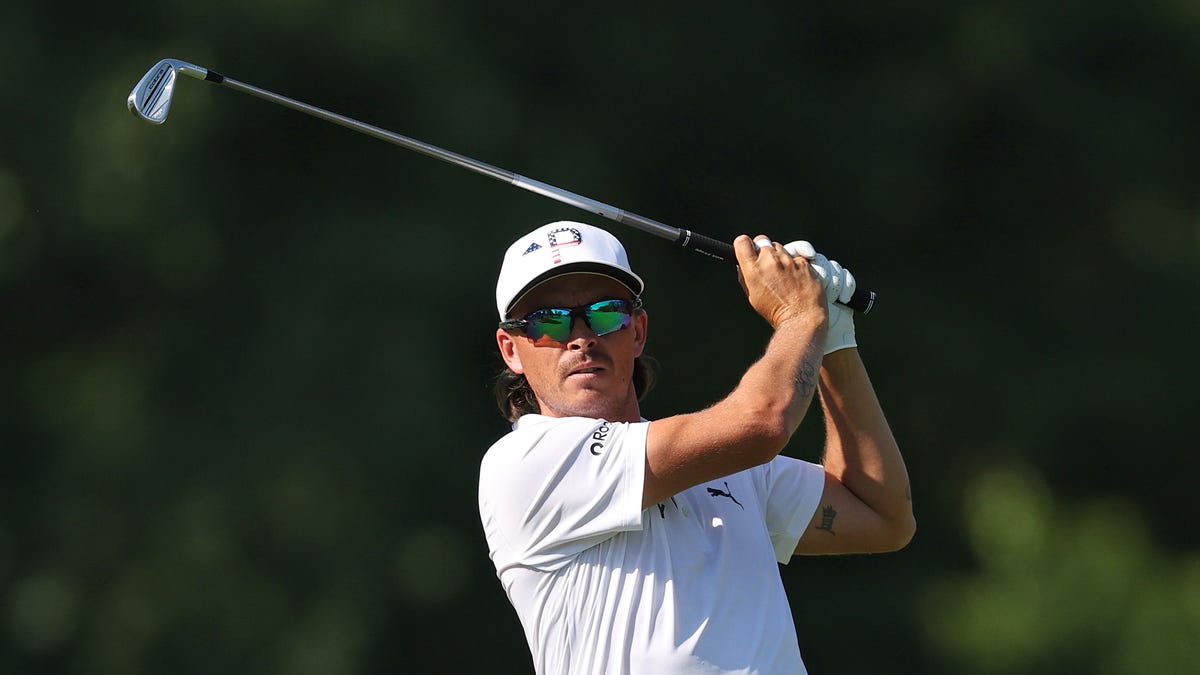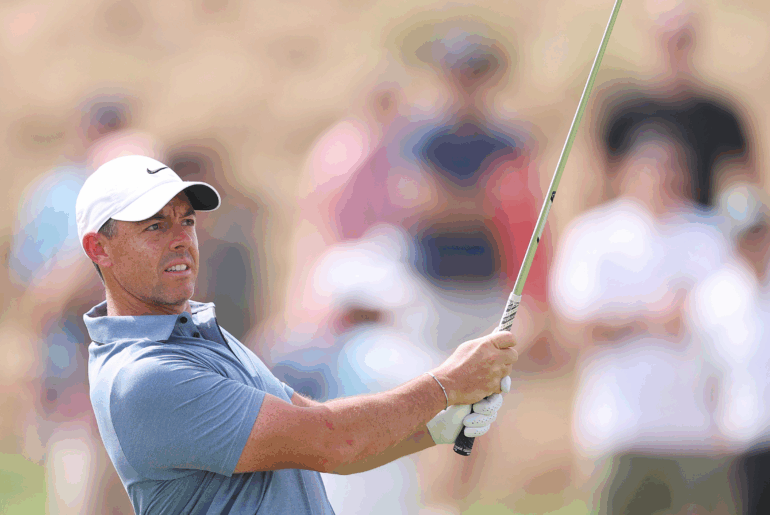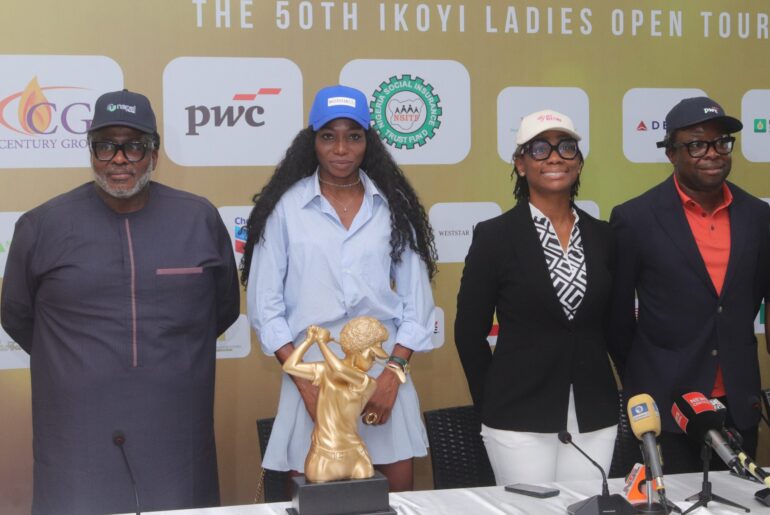More golfers are switching to graphite iron shafts. Here’s what the experts say about the pros, cons, and who should consider making the change.
Graphite shafts are nothing new. They’ve been in drivers and fairway woods for decades, nearly every hybrid comes with a graphite shaft, but irons are a different story. For many golfers, steel has always been the default — part tradition, part feel, part belief that graphite is only for older or slower-swinging golfers. But that idea is as timely as the mashie-niblick, plus-fours and sheep being used as lawn mowers in the fairway.
Rickie Fowler has been experimenting with graphite iron shafts in his Cobra irons since late June, specifically AeroTech SteelFiber shafts, the same brand and type that Nelly Korda has used for years in her TaylorMade irons. Bryson DeChambeau plays L.A. Golf graphite shafts in all 14 of his clubs, and C.T. Pan has KBS graphite shafts in his Titleist irons.
“I mean, they went in the week of Travelers, so it’s been a little over a month now,” said Fowler before the start of the PGA Tour’s Wyndham Championship. “Something that’s a little easier on the body, and seemed like I got very similar numbers to where I was at.” Fowler then added, “I feel like we’re always trying to search. One, to get better, but two, to see if there are ways to make things easier, whether that’s physically, mentally, whatever it may be. So yeah, I thought they were good enough to, obviously, put into play, and I look forward to doing some more testing.”
Thanks to modern materials, better manufacturing processes, and the influence of custom fitting, graphite iron shafts are now more consistent, stable, and performance-tuned than ever. With the help of a trained custom fitter, graphite iron shafts can do many things, like tighten distance gapping, improve launch conditions, and reduce strain on your body.
All of that leads to the question that every golfer should ask: Who, exactly, should be thinking about making the switch? To help answer that question and others, Golfweek reached out to several brands that manufacture graphite iron shafts — along with some designers at major iron companies.
1. What are some advantages that graphite has over steel when it comes to iron shafts?
There’s no question that graphite provides shaft makers with design flexibility because carbon fiber is anisotropic, which is a fancy word that means it can be stiff in one direction and soft in another. That means engineers can dial in properties like weight, torque, and bend profile independently. That’s nearly impossible with steel because it is isotropic — which means it has the same strength in every direction — and therefore more limited in how it can be manipulated.
As Tom DeShiell from Mitsubishi Chemical explains, “If you only want to change torque in a graphite shaft, you can. If you want to change stiffness and nothing else, you can do that too.”
Modern graphite’s weight range is also broader. Dustin Barksdale at Titleist notes, “The lightest steel shafts are in the 70-gram range, while graphite shafts can be made in the 40 to 50-gram range.” At the same time, there are several graphite shaft options that tip the scales at over 120 and 125 grams. That gives club fitters more options to build clubs that help players gain speed or reduce fatigue.
Graphite also offers potential vibration-damping benefits. For players with joint pain, chronic injuries, or who simply desire reduced vibrations, graphite can be a welcome relief.
2. What are some disadvantages of graphite iron shafts?
Graphite iron shafts are generally more expensive to produce, and for many players, that premium isn’t justified unless the performance clearly improves.
“Yes, they’re typically more expensive, understandably, just because of how they’re made from a manufacturing standpoint,” said Matthew Simone, TaylorMade’s director of custom products. “But, I mean, these manufacturers, Fujikura, Mitsubishi, UST, they’re so good at what they do, right? They make such good product that there’s no quality issues.”
Graphite shafts also tend to have a higher balance point, which can change swingweight and feel unless compensations are made during assembly — typically by adding head weight or adjusting length.
3. Graphite iron shafts have a stigma for only being suitable for senior players and slower-swinging golfers. Who are the golfers today who are most likely to use graphite iron shafts?
While that senior stigma hasn’t entirely vanished, it’s evolving.
“I believe most golfers choose graphite primarily for the lighter weight,” says Marni Ines, Director of Iron Development at Titleist. His colleague, Barksdale, adds that two groups stand out: “Those looking for lighter weight, and those who like the vibration-damping effects. Some players just prefer the feel of graphite over steel.”
Fitters are also starting to see mid-handicap and even single-digit players in their 30s and 40s make the switch — not because of age or injury, but because they find better consistency or launch profiles that fit their game more effectively.
4. Price is not an issue for Tour players, but Tour adoption of graphite iron shafts has been slow. Why?
Tour players are creatures of habit. Most grew up playing steel, and steel still gives them what they need: a familiar feel, as well as predictable flight and distances. And while distance is king in the driver world, iron play is about precision and gapping. As DeShiell points out, “Once [a Tour pro] gets consistent gaps between clubs, it’s hard to get them to spend the time adjusting an entire set with different shafts.”
There’s also a psychological hurdle: many graphite iron shafts are designed to mimic steel in feel and performance. If that’s the case, “Why would a player bother if it’s just a painted steel shaft?” DeShiell asked rhetorically.
However, adoption is increasing — especially in long irons, utility irons and driving irons.
“We are seeing more adoption in utility irons,” says Ines. That could be the Trojan horse that leads younger players to try graphite earlier in their careers, especially as custom fitting becomes more sophisticated and players start searching for individual shaft solutions within blended sets.
TaylorMade’s Simone added, “It’s one of those things where, I think, if some of the top players and some of the best iron players start to use graphite and they say something like, ‘This helped my ball flight in this way’ or ‘I feel like I can hit a it easier with this,’ you’ll see some of those dominoes start to fall. Then you can start to start to pick up steam with it. It’s just, for whatever reason … it’s been probably the least changed equipment piece for years.”
So … is it time?
If you’re looking for more speed, a softer feel, or you’re open to rethinking the makeup of your iron set, it might be. But don’t expect graphite to magically fix your swing or give you 10 more yards over well-fit steel shafts. Like any shaft choice, it comes down to matching your tempo, launch needs, and feel preferences. And as the options keep expanding, so does the number of players who can find their perfect fit in graphite.
Even with the rise of graphite in iron shafts, switching isn’t a one-size-fits-all decision. But, for golfers who want to explore different weights, different flights or who simply reduce wear and tear on their body, there are more high-performance graphite options than ever before. Here are a few standout models worth a closer look:
Accra iCWT, $60 each
Weights: 75, 95, and 115 grams
This graphite shaft comes in 10 lengths (2-iron to sand wedge) and each has a 4-inch parallel tip section that allows fitters to trim the shaft and “dial in” the desired flex/
AeroTech SteelFiber, $63 each
Weights: 56, 74, 85, 95, 110125 grams
The most-played graphite shaft among professionals, these shafts have a graphite core in the center that is encased in over 59 miles of ultra-thin steel fibers to blend the benefits of both materials.
Fujikura Axiom, $105-$125 each
Weights: 75, 95, 105, 125 grams
Designed with VeloCore, the material that makes Ventus wood shafts more stable on off-center hits, Fujikura claims Axiom graphite iron shafts can help your irons twist less on off-center hits, so your accuracy improves, your dispersion pattern tightens and mis-hits are not punished as severely.
KBS PGI Players Graphite, $64.95 each
Weights: 50, 60, 70, 80, 90 and 100 grams
This shaft is designed to mimic the performance of KBS steel shafts, while providing more vibration dampening and helping golfers who benefit from lighter-weight shafts.
L.A. Golf A Series, $99 each
Weights: 45, 55, 65, 85, 105 grams
The A Series is available in different profiles and weights to help golfers find the flight they need. Lighter options help generate more spin and height, while the heavier models lower spin and help golfers achieve a more piercing flight with lower spin.
Mitsubishi MMT, $60 each
Weights: 40, 50, 60, 70,80 and 90 grams
The MMT stands for Metal Mesh Technology, and these shafts — inspired by arrows created by Mitsubishi’s archery division — have layers of 304 stainless steel between layers of carbon fiber. The result: reduced shock, more consistency, and enhanced feel.
UST Mamiya Recoil Dart, $45 each
Weights: 55, 65, 75 grams
Among the most popular graphite iron shafts among recreational golfers, Recoil Dart is designed to maintain its structure and help golfers transfer swing energy into the ball more efficiently for more distance and consistency.







